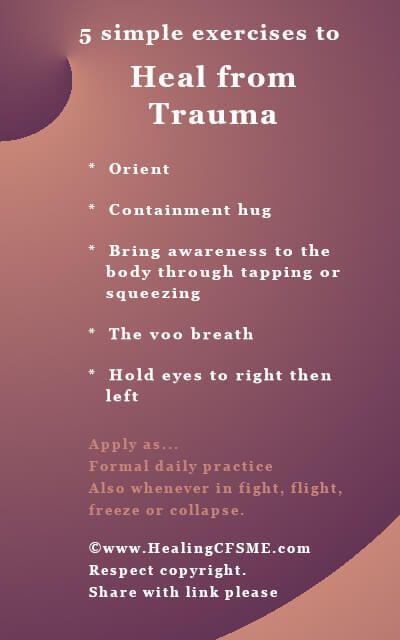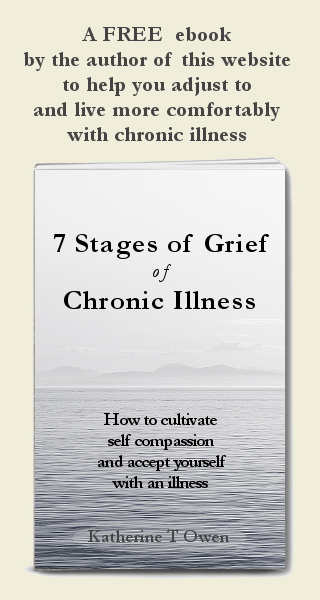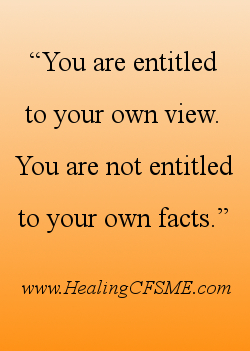Heal from Trauma
One way to heal from trauma is to help the body to spend more time in a place of rest and digest.
'Rest and digest' is a state in which the body's natural ability to heal comes into play.
Regardless of the chronic illness with which you live, the simple trauma healing exercises on this page are worth learning.
And if you are not living with illness, these exercises will help to build resilience in your system so that times of stress in your life are less likely to lead to stored trauma.
If you're on this website, the chances are you are interested in healing.
'Healing’ does not
refer to fixing the body, rather to removing blocks such that the body’s
capacity for healing is restored.
Many of us spend much of our time with our body in a
survival state – either stressed or collapsed.
When the body is in a survival state, it is not in a state
for healing.
Think about it. When you’re running from a predator, your body is not going to prioritise good digestion, and the ability to relax. It’s going to prioritise doing what it needs to do to let you run fast, or fight, or do what you need to do to be quiet and stay hidden, in the hope that a predator will lose interest.
By making somatic exercises part of your everyday life, you can encourage your body to be able to return more quickly from a survival state into a healing state. This can help you heal from past trauma and increase your resilience to developing a trauma response in the future.
Breathing exercises are also important.
Or click here to CHOOSE FROM
A RANGE OF personalizable cards and gifts.
The healing-themed gifts are designed by myself, Katherine, the author of
this website HealingCFSME.com
Proceeds go towards the cost of the website. Thank you. Enjoy!
Contents for Heal from Trauma
Please scroll down to the sections of interest. Or click on a link if provided.
- My journey with somatic exercises
- Disclaimer
- How to heal the nervous system - gently
- Apply the trauma healing exercises often
- Orienting
- Containment hug and bringing awareness to the body through tapping or squeezing
- The voo breath
- Reset the vagus nerve - hold eyes to right then left
- Goal setting for applying these somatic exercises
My journey with somatic exercises
In 2020 I started diligently applying myself to how to heal from trauma.
Over the last 5 months I have seen consistent benefits.
When the ME/CFS (Myalgic Encephalomyelitis/Chronic Fatigue Syndrome) symptoms become elevated past a certain point, I often feel fear.
As a result of the healing exercises, my ability to soothe myself at these times (my ability to self-regulate) is improving.
I am finding myself sharing with other people with Myalgic
Encephalomyelitis/ Chronic Fatigue Syndrome or other chronic illness about the benefits of doing
somatic exercises to heal from trauma.
I am writing this article so I can send them here so they can decide if it’s something they want to try.
Disclaimer
At the time of writing, I have spent over 150 hours listening to information about how to heal from trauma or applying the exercises. I take my journey of healing seriously.
And yet I include this disclaimer. I am NOT a teacher of how to heal from trauma. I am very much a student.
I share this information on
the understanding that you take responsibility for your own health.
My aim is
to give you some resources to check out.
How to heal the nervous system- gently
Setting out to have a regulated nervous system doesn't work on the principle of 'no pain no gain'.
An exercise which helps another may not help you.
An exercise which helps you at one time may not help you at another time..
You may be able to do a somatic exercise for a few seconds only, and build up over time.
Be gentle with yourself.
Apply the trauma healing exercises often
In order to see results, you need to take these exercises to heal from trauma seriously, and apply them often.
They are not hard. They don't take long. But they only work if you do them!
It's
important to make them part of your daily life.
Doctor Aimie Apigian really brought this point home to me. She
ran the Biology of Trauma Summit.
She was clearly well, able to operate
at a high level of health, having healed from her experience with chronic
fatigue.
And yet she, along with many of her guests, emphasised that she
still does these exercises throughout each day.
The aim of the repetition is to build resilience to stress, so that stress doesn't get stored in the body as trauma.
Also to train oneself to have this toolkit of healing exercises
available to you.
In a moment when the body goes into fight and flight, or collapse, the
prefrontal cortex is not operating, and therefore you are unlikely to think, ‘What
lovely resource is available to me right now?'
The way these trauma releasing exercises will be available to you is if you have trained yourself to do them so often that they have become second nature.
Orienting
Many years ago now I was introduced to the trauma releasing exercise of very
deliberately looking around you to different parts of the room you are in.
You can
do the same if you are outside. This exercise is called orienting.
I learned that orienting cultivates a sense of safety in your nervous system.
However, I didn't take this piece of advice seriously and apply it to my life until I understood the reason behind it.
Are you sitting in your room right now looking at the screen?
If you are on your own, in your accommodation, or even if you are in a public place, you may be very
confident that no one is about to come up and verbally or physically attack
you. And yet you may find yourself in a state of feeling on edge. Perhaps
you hear a noise and feel on alert. If so, it's quite possible that your
nervous system is feeling vulnerable to attack.
You may try to reason yourself out of this sense of attack.
However, you have a reptilian brain and a mammalian brain that
are older than the reasoning parts of the brain. You also have nervous system responses that are designed to
allow you to override your rational mind.
Looking very deliberately around you – orienting– is one thing that you can do many times a day in order to calm your nervous system.
Don't expect this to bring immediate benefits. Just
build it into your daily practice.
At a time when your body is safe, let it know that it is safe. You are training your body to be able to tell the difference between danger and safety.
Containment hug and bringing awareness to the body through tapping or squeezing
The video below shares three simple techniques from Peter Levine to help you heal from trauma.
These are tools for how to self-soothe and self regulate the nervous system.
You may at times get lost in your thoughts in a way that does not feel good for you.
You can potentially quieten these thoughts by consciously locating yourself in your body.
If your trauma comes from chronic illness or physical abuse, it may not feel safe to you to be in your body.
Indeed there may have been times in your life when the skill of 'leaving' your body was helpful to your survival.
However, when you leave the body or 'disassociate' too often, you are likely to end up feeling numb to life, as though you are not truly living.
This is your body. This is your life. Claim it.
Three somatic exercises to heal from trauma - from Peter Levine
1. The containment hug.
I find this so helpful. Less so than I did at the start.
A friend had an 'Oh no' response. He felt like he was in a strait jacket! So remember to do what is right for you.
2. Hand on forehead. Hand on upper chest.
And then move the hand from the forehead to the upper belly.
The exercise may take on even more power if you feel the contact of your hand on your skin.
Imagine you are a baby being held and soothed.
You might want to adapt the exercise by gently rocking.
(If you are living with severe ME and are bedbound, putting your hands on your body in this way is a good somatic exercise for you, as it can be done lying down.
This is also a good trauma healing exercise to do if you are lying awake at night.
I do it first thing in the morning before I get out of bed.)
3. Tapping as in EFT. Or a butterfly hug tapping. Or squeezing the muscles round the body.
Voo breath for trauma releasing
Instructions start at 2 minutes 20.
Full breath in.
Out breath whilst saying Vooooooo. Feel it in the belly.
Peter Levine doesn't say it here, but follow the breath in your consciousness, up the windpipe and out of the mouth.
That one additional instruction (heard by him in an online course I attended) made this a more powerful exercise for me.
Again he doesn't say it here, but the hope is that the shift in your nervous sytem to the parasympathetic state may be confirmed by a spontaneous in-breath immediately after the exercise. Or a yawn or a swallow.
These indicate that your body is moving into rest, digest and heal.
Reset the vagus nerve - hold eyes to right then left
Instructions start at 1 min 53
Sukie Baxter. She credits Stanley Rosenberg as the author who introduced her to the vagus nerve reset exercise.
This exercise achieves the same result for me as the voo breath so I alternate between the two.
I do the exercise sitting up, and it still has power.
It is my understanding that once you get a spontaneous in breath (swallow or yawn) you can return your eyes to look straight ahead.
But please do your own research.
A selection of techniques to ground and discharge
EMOTIONAID from Gina Ross.
Goal setting to heal from trauma
ACTION POINTS
- Bookmark this page so you will be able to find it easily
(The bookmarks tab is probably at the top of your screen.) - Which of the exercises above do you choose to do daily to heal from trauma?
- At what time of day will you do a formal practice session for a few minutes or more, depending on your capacity at the time?
- When was the last time when you went into a fight
or flight, freeze or collapse response?
Take yourself back in your mind to this time.
Imagine yourself doing one of the trauma healing exercises in this moment when it is most needed. - If you have an event coming up which you anticipate may take you into a fight or flight, freeze or collapse response, take yourself forward in your mind. Imagine practising one of these exercises before or afterwards.
- Do you wish to hold yourself accountable to carry out your
practice to heal from trauma?
Consider printing out a chart for one month, or having a table in Microsoft Word, or a spreadsheet which you will tick each day for the next month.
- Home Page
- Trauma healing
Receive daily inspiration...
by putting your favorite (favourite) healing quote on
a mug, cushion, postcard, coaster, T shirt etc.
You will find my zazzle gift store at
zazzle.com/HealingStore.
Use one of my designs or start from a blank.
Thank you from me, Katherine, author of HealingCFSME.com
 |
© Katherine T Owen. All articles on this website are copyrighted. I am delighted if you choose to click above to share this page on social media, but please
do not copy, print or otherwise use without my permission. Thank you. Disclaimer:
I am not a medical practitioner. The articles on this website are not
to be taken as medical advice. Please consult a medical practitioner as
necessary. |











